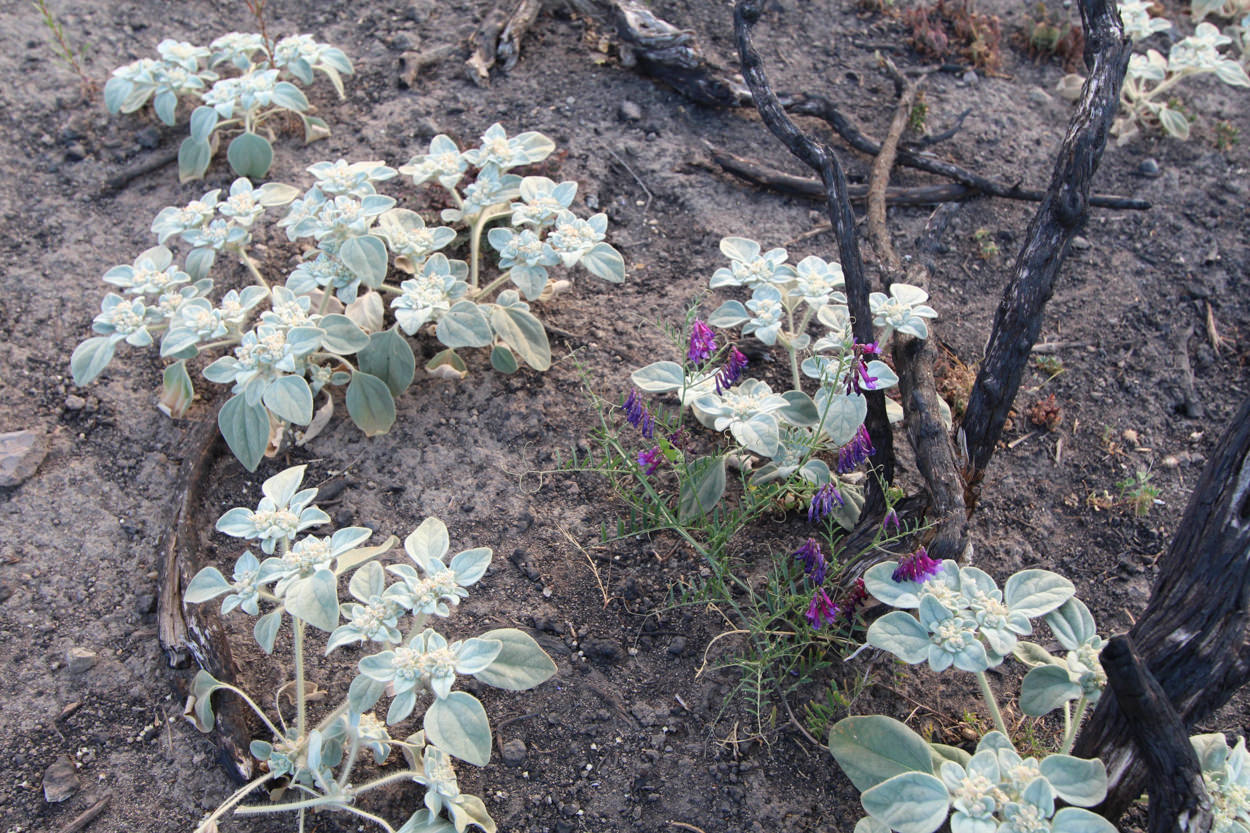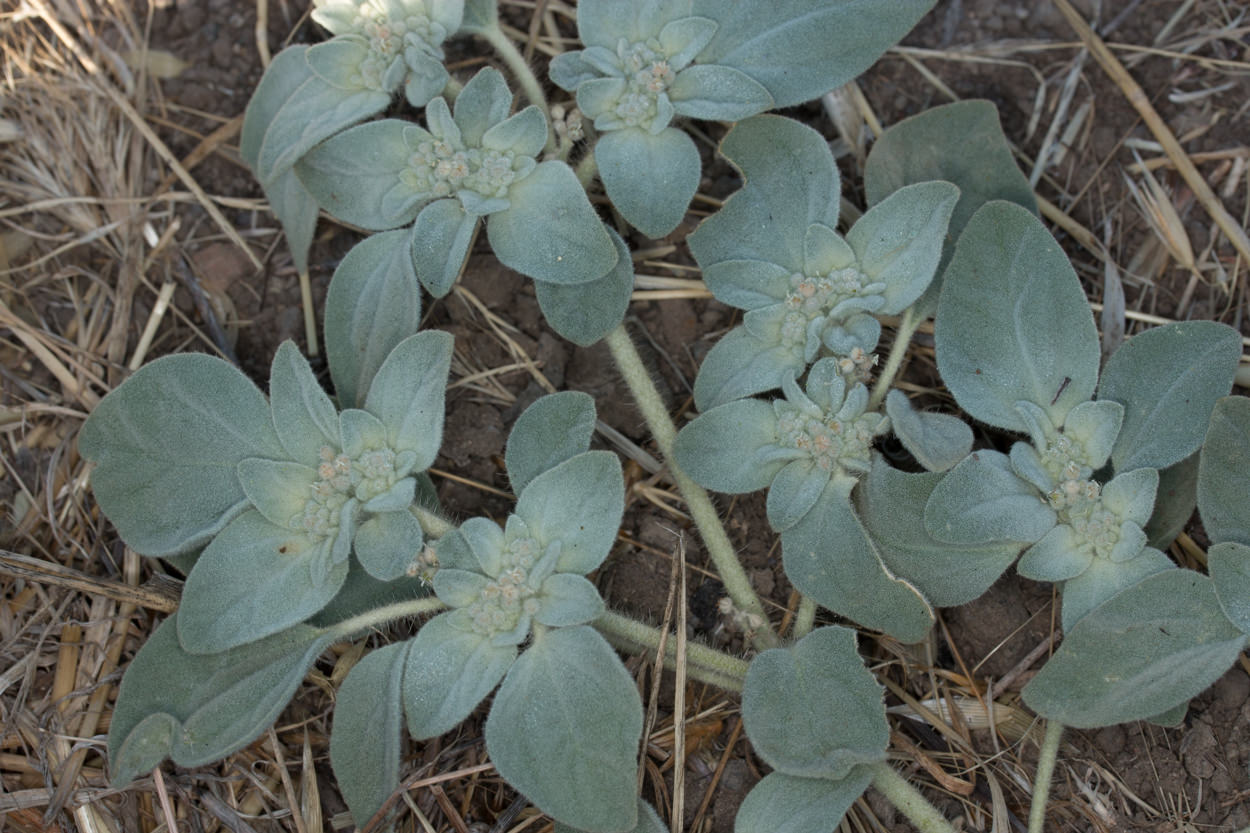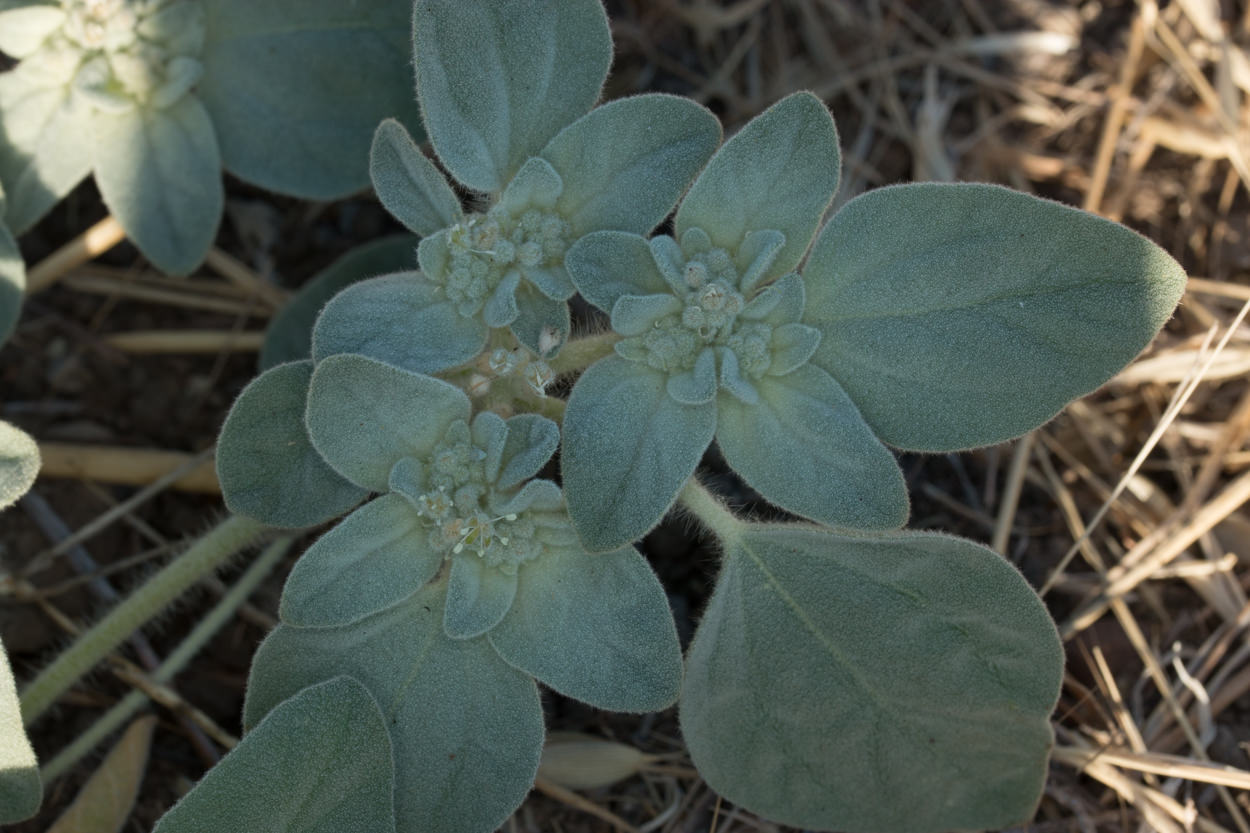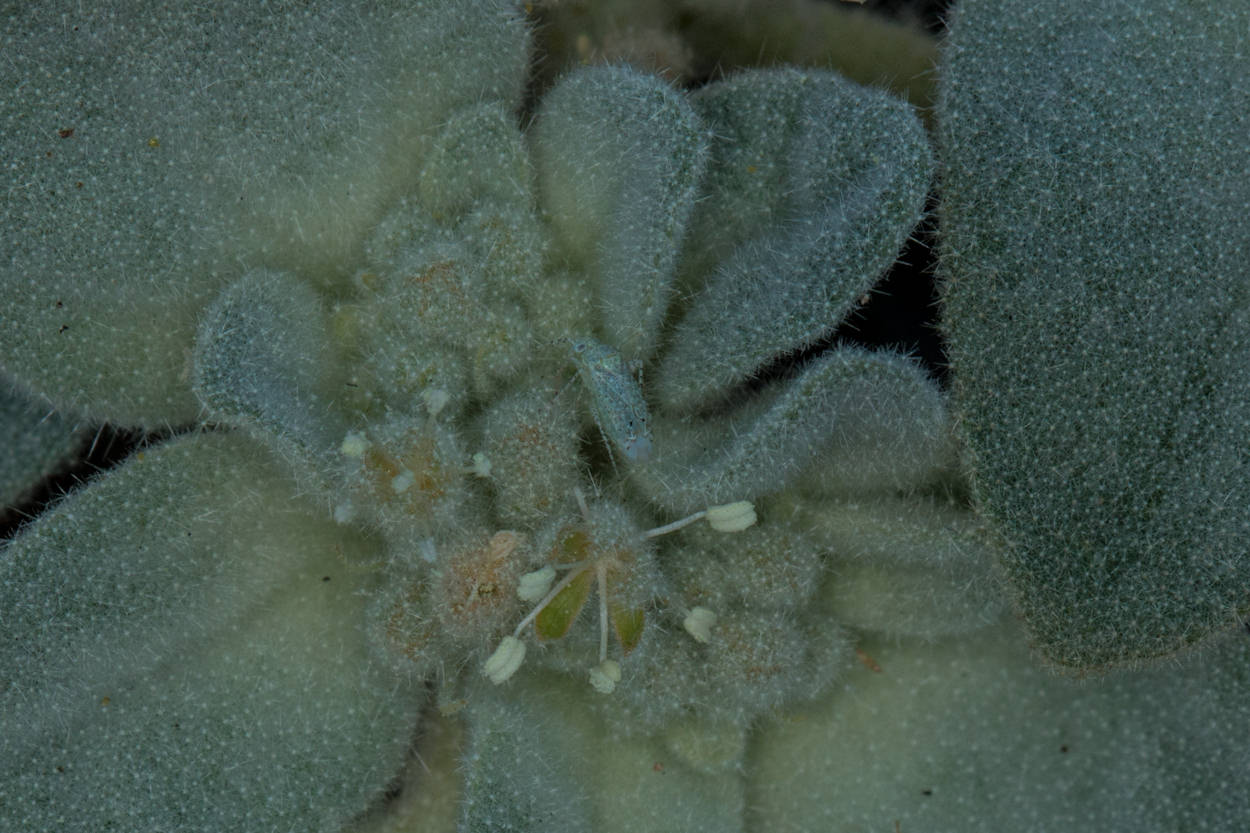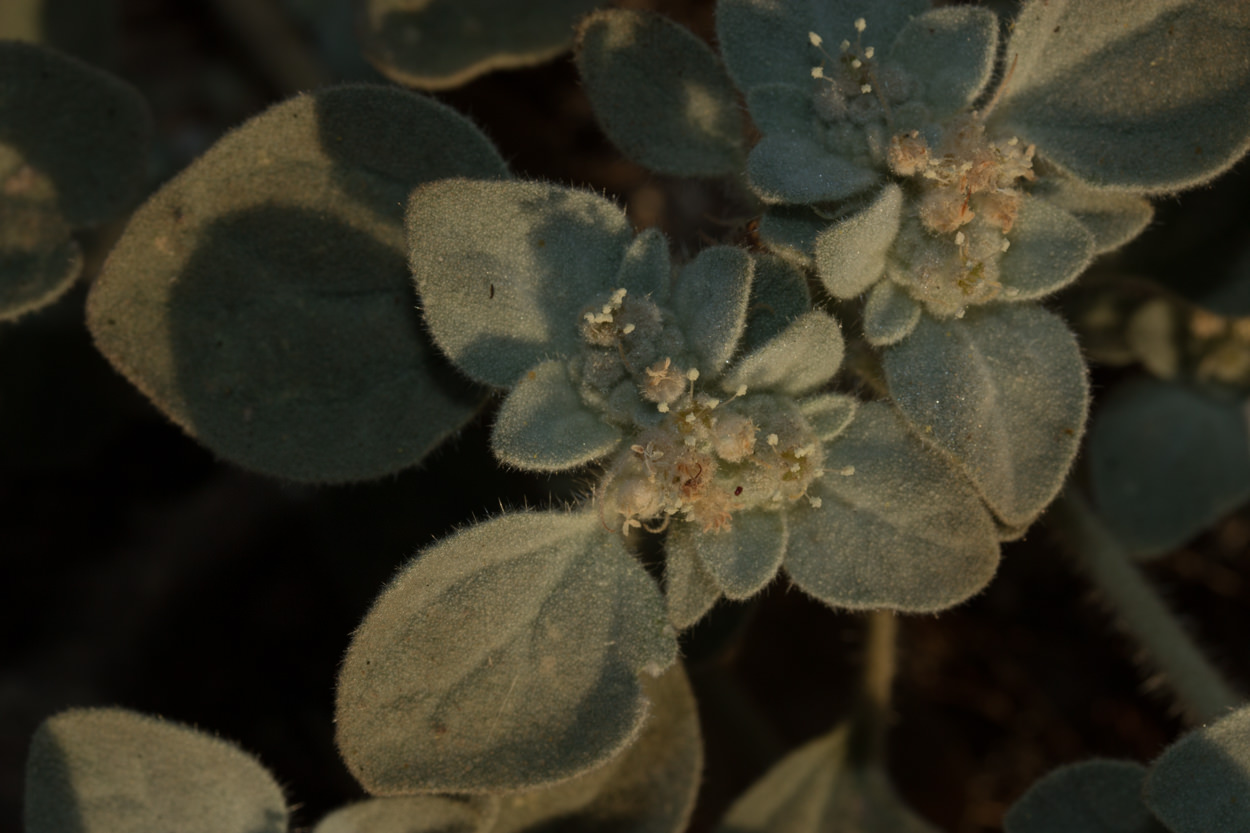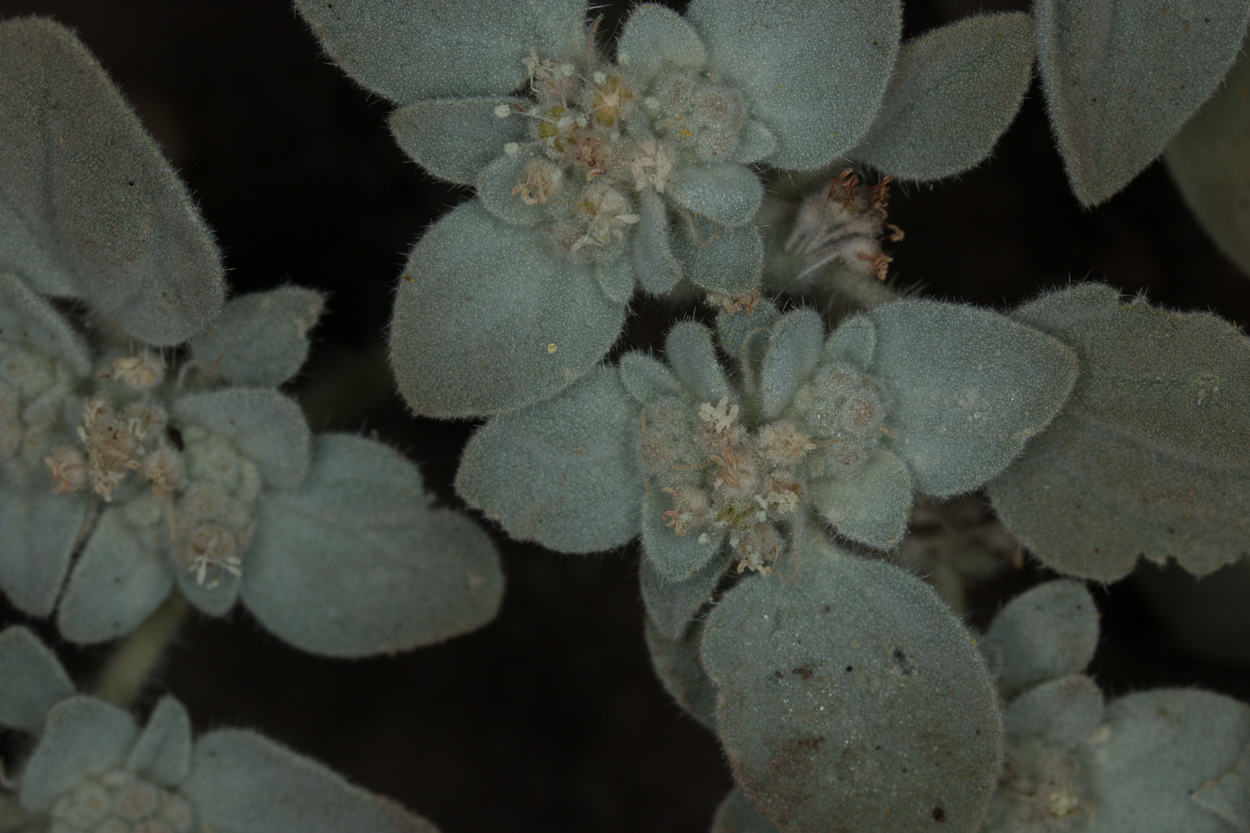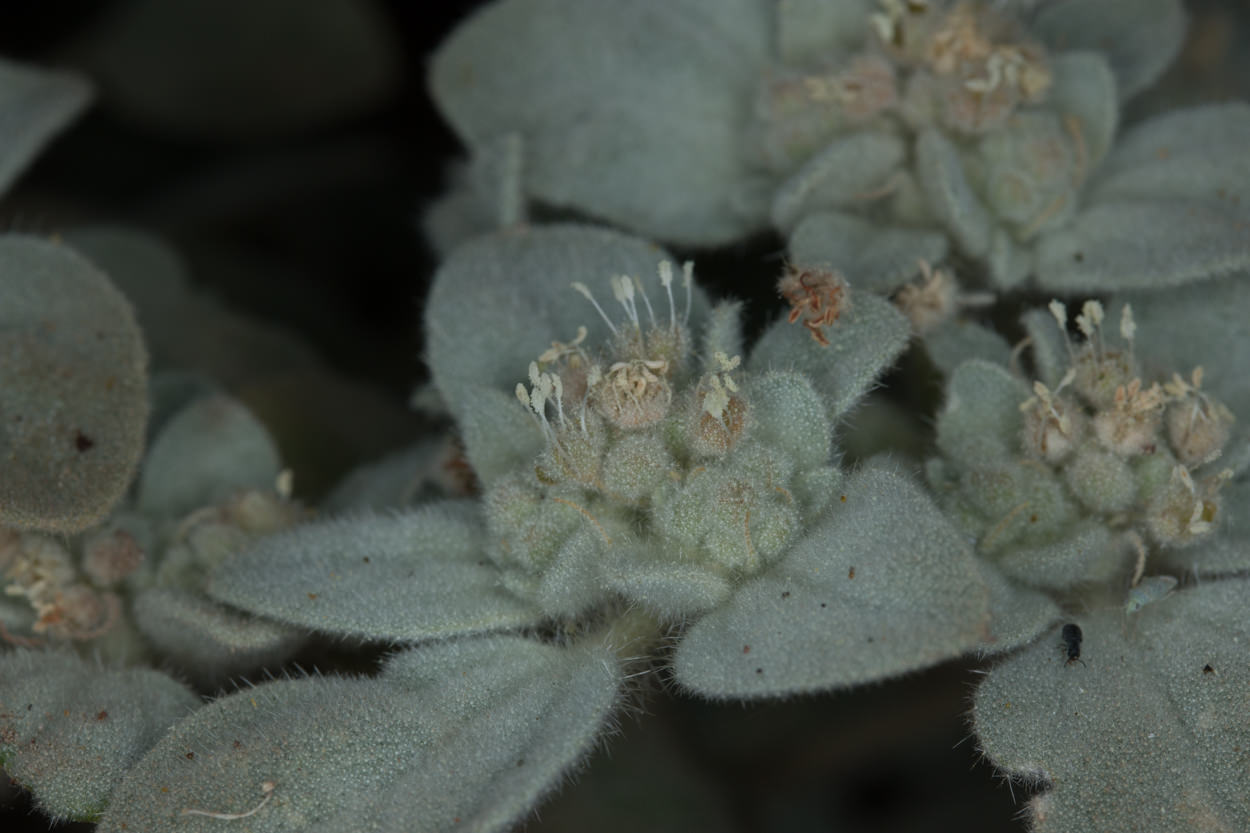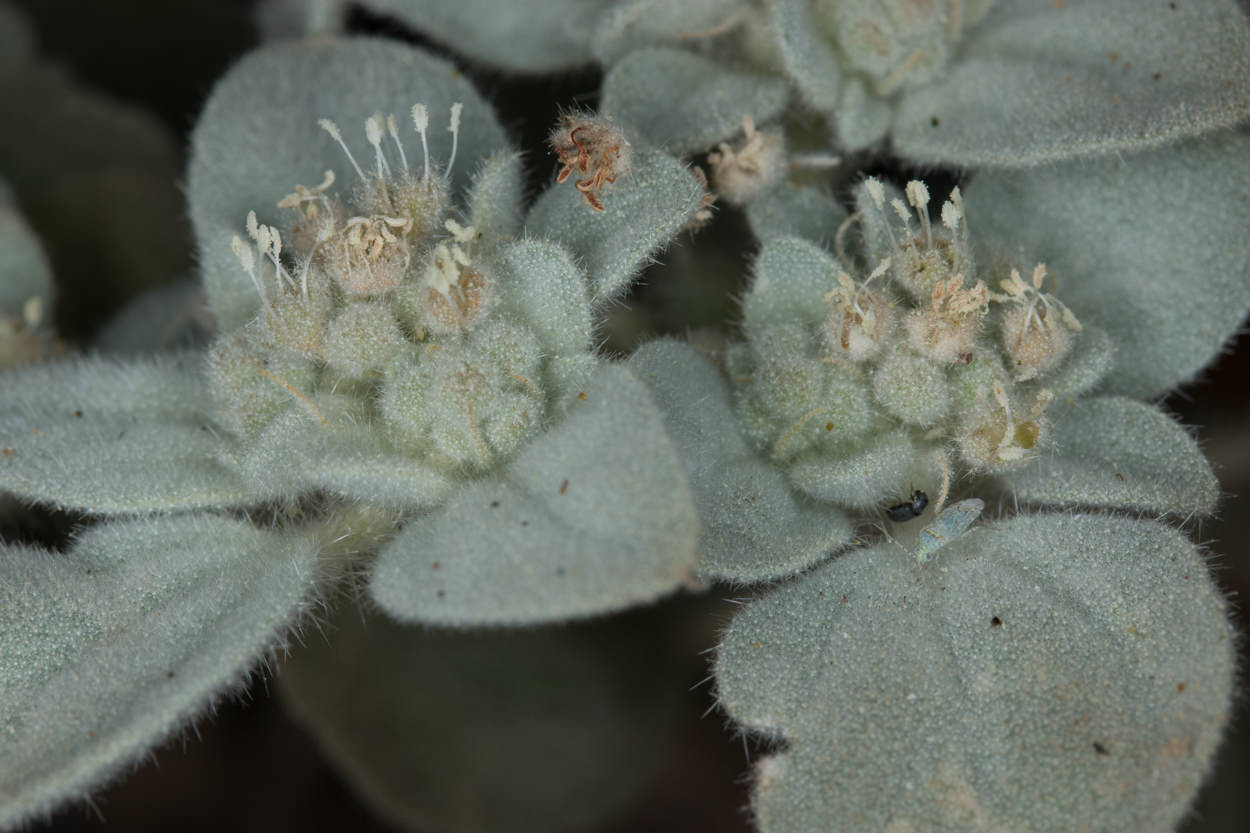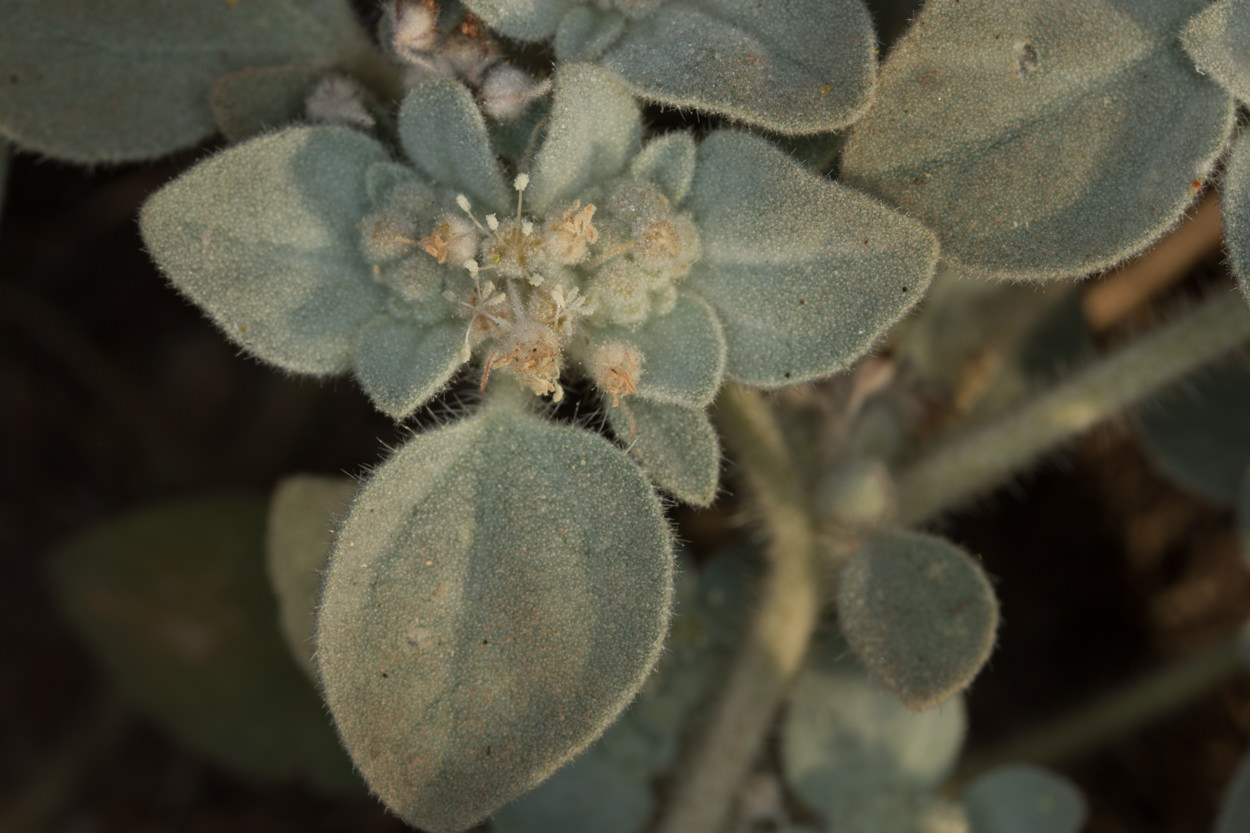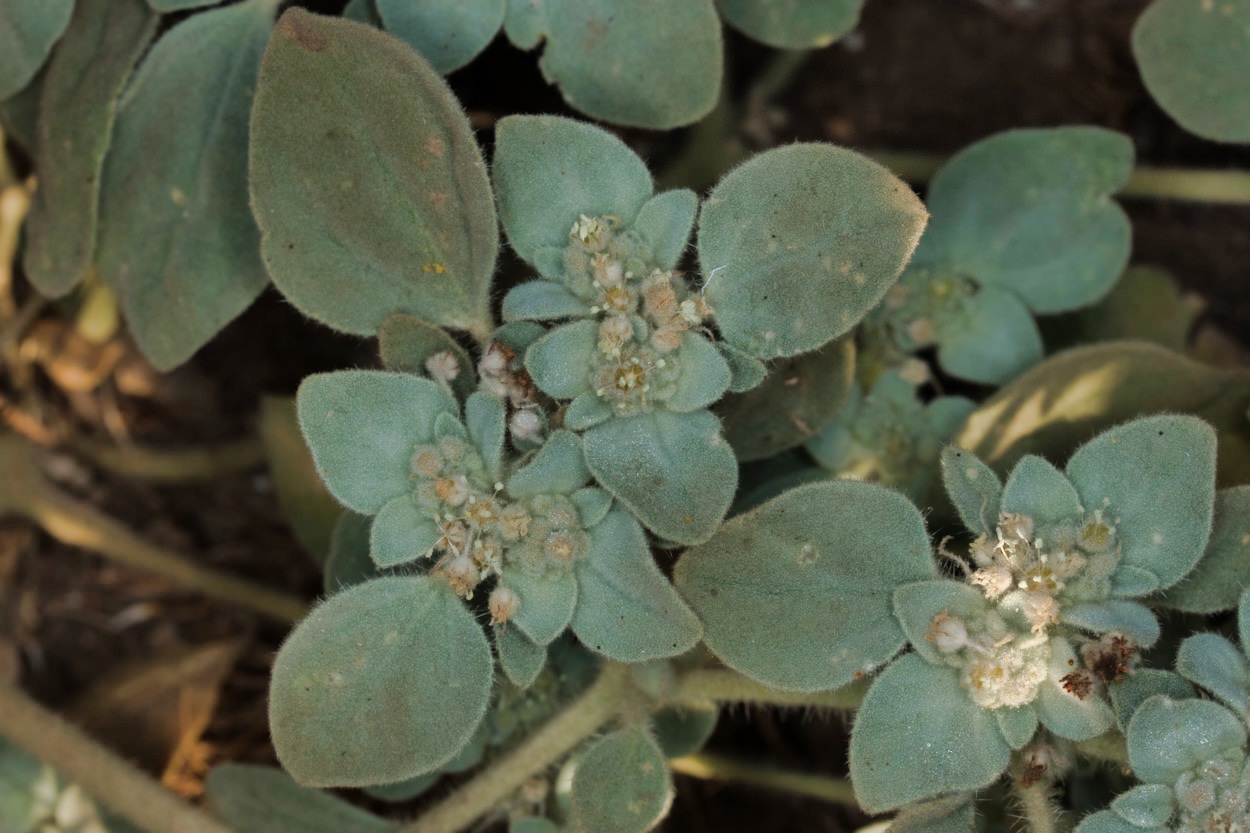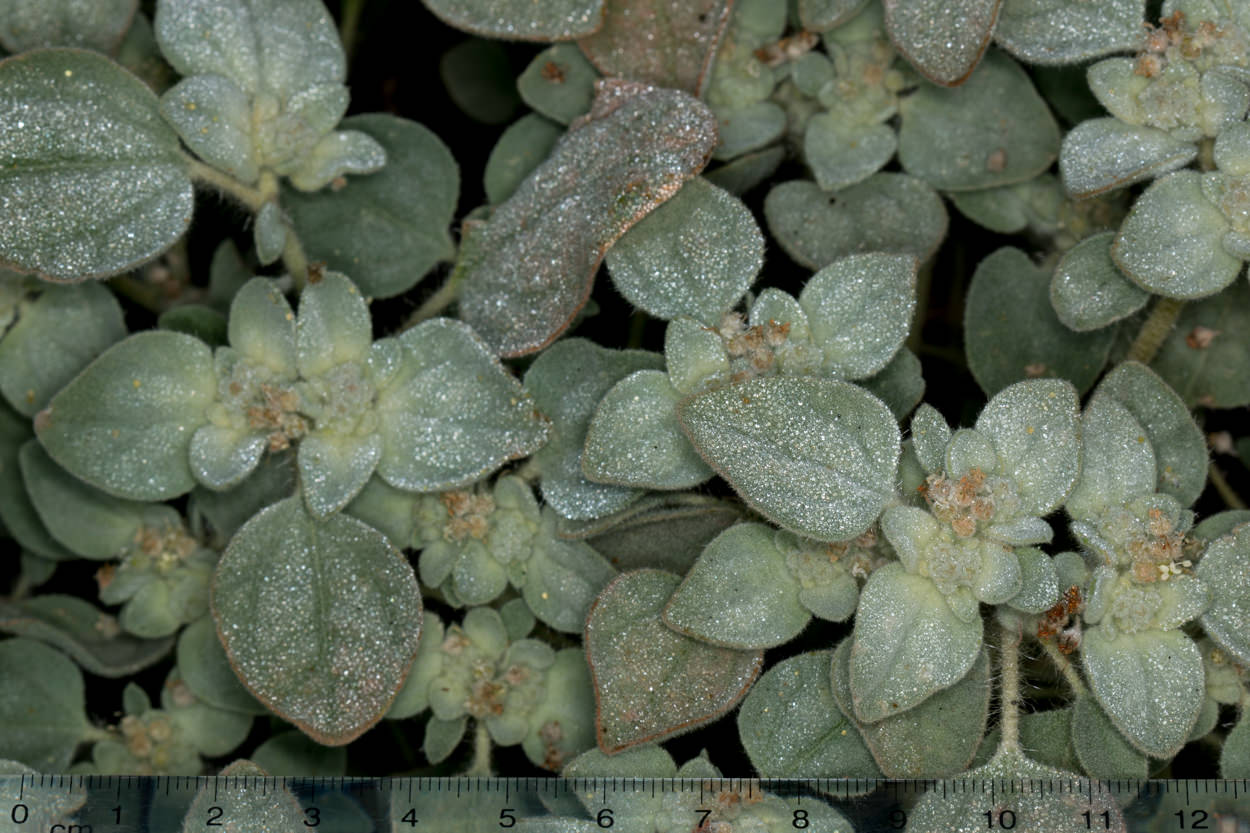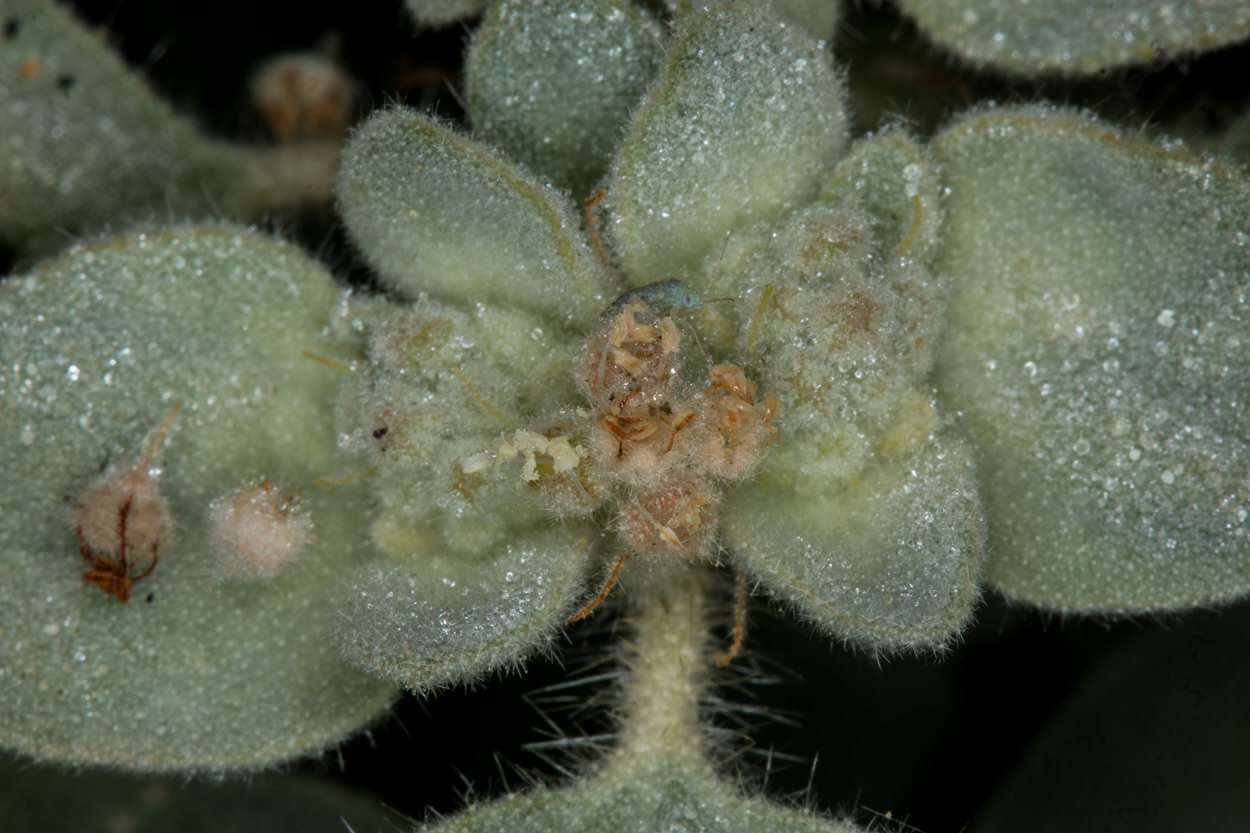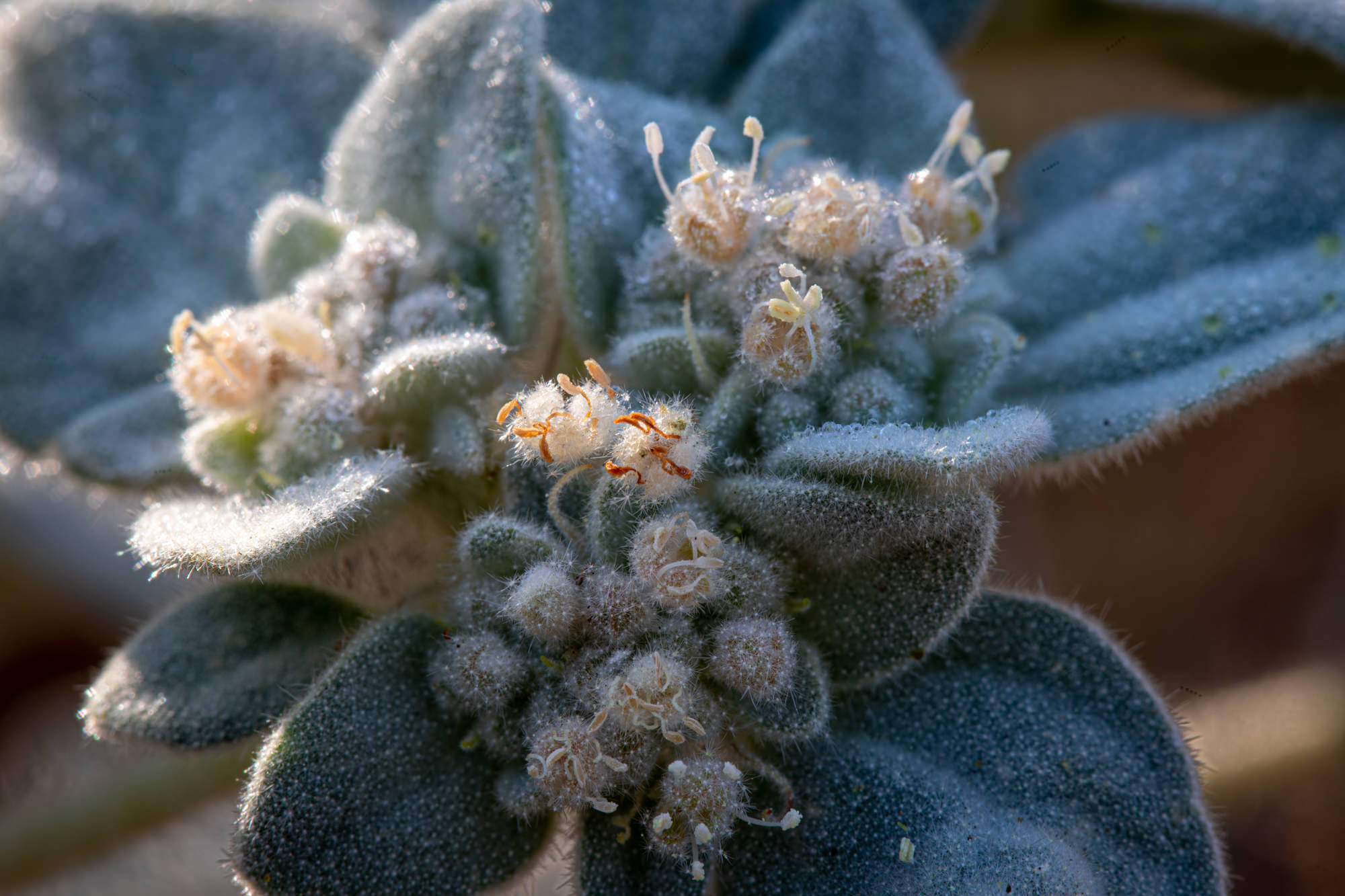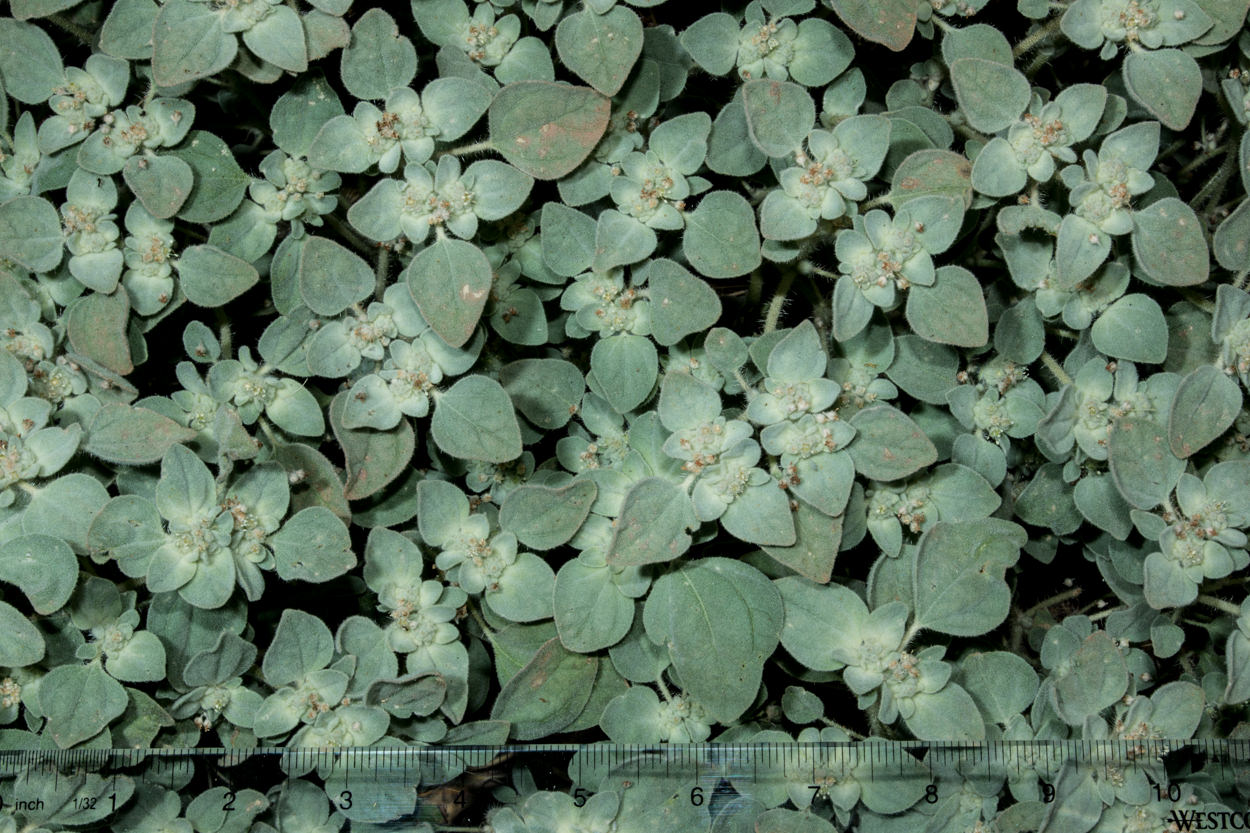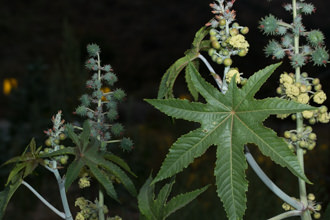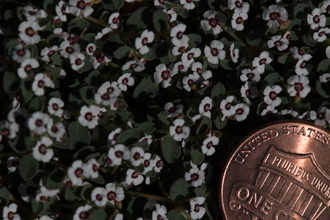Santa Monica Mountains Trails Council Plants Resource Page
Plant of the Month - Turkey Mullein

Plant Description
| Common Name(s): | Turkey Mullein |
| Scientific Name: | Croton setiger |
| Family: | Euphorbiaceae (Spurge) |
| Plant Type: | Annual |
| Size: | up to 12" - spreads |
| Habitat: | Common in open, sandy disturbed places |
| Blooms: | April to November |
| Fire Response: | Germinate from Seed |
Turkey mullein is a very low-growing plant that is commonly found in summer through fall on the sides of fire roads and other such places that are open to full sun. Its gray-green, roundish, thick leaves are 1/2 to 2 inches long, spade-shaped with 3 veins visible and covered in bristly hairs. Stems are also bristly. The pale yellowish flowers largely blend in with the foliage and are in bloom from May to November.
The species name of Eremocarpus stands for single fruit, which is present on pistillate flowers. Setigerus means that it bears bristles. Its common names tell two different stories; one, it is a food source for certain fowl that favor its seeds. Two, native peoples found the stems and leaves to contain a poison that they used to stun fish. Additional early uses were mostly topical in nature to cure chest disorders or other ailments.
One odd thing I've noted about this plant as I've been observing it this fall is the how often I find it growing in geometric shapes. I've seen triangles, squares, arrows, diamonds, and trapezoids to name a few. It is almost like searching for shapes in the clouds.
Contributed by Liz Baumann
Turkey Mullein - Originally featured: October 2007
Last modified: May 13 2017 20:01:20.
References:
Wildflowers of the Santa Monica Mountains, by Milt McAuleyFlowering Plants: The Santa Monica Mountains, Coastal and Chaparral Regions of Southern California, by Nancy Dale
Chumash Ethnobotany: Plant Knowledge Among the Chumash People.., by Jan Timbrook

